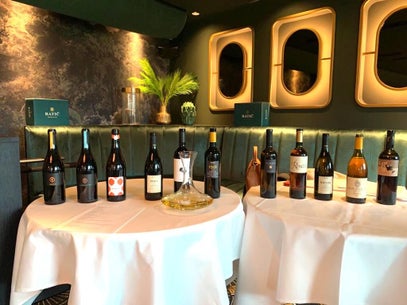The Orange Wine Club
Real Wine - Real Food - Real People
Since 2013, importer of exclusive natural wines, specializing in macerated white wines from small biodynamic winemakers from Croatia, Slovenia and Italy.
At this time are only working as distributors for professionals. Contact us via email: info@theorangewineclub.nl
For retail sales, visit the web shop or visit the SPECTRUM gallery in Laren, Nieuweweg 41-B

Thank you for visiting us!

